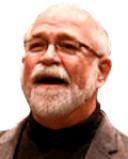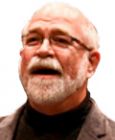Play
The Art of Loving and the Spirit of Play
Remembering Erich Fromm this Valentine’s Day
Posted February 13, 2013
If you visit your local bookstore looking for a gift this Valentine’s Day, amid the cookbooks, joke books, selections of love poetry from Robert Burns and e.e. cummings, maybe Walter Scott’s Fair Maid of Perth, surely Love Story, and new illustrated editions of the Karma Sutra, you’ll likely also find on display Erich Fromm’s philosophical 1956 volume The Art of Loving. The book became a best seller and remained popular; its sales surpassed 25 million by the turn of this century.
That it should have been Fromm to have written such an enduring book about love comes as more than a bit of a surprise. Fromm, a dour Talmudic scholar, a refugee from Hitler’s Germany, a psychoanalyst and a veteran of the strife among fractious émigré Freudians, and a transplanted left-leaning European intellectual in a conservative Cold War America, had written other million-seller books. The most prominent, Escape from Freedom (1941), depicted a tale of awful warning about the social and personal perils of conformity, group hatred, and the authoritarian personality. Driven by the precarious balance of mutual assured nuclear destruction and others among modern civilization’s discontents, Fromm became a peace activist, too. He befriended and influenced President John F. Kennedy and other government officials, usually tempering their hawkish propensities.

Valentine, Courtesy of The Strong, Rochester, NY
By the 1950s Fromm had found love, and with his glamorous new wife, went into semi-exile in Mexico where he established a clinical practice and introduced psychoanalysis to the country. We learn about the influential therapist and his even more famous clients in a biography, new this February from Lawrence Friedman of Harvard’s Mind, Brain, and Behavior Initiative. In The Lives of Erich Fromm: Love’s Prophet, Friedman details how Fromm, whose his first marriage ended in divorce and the second in his wife’s suicide, taught himself to love and in turn, taught millions of others about love. Love shouldn’t be confused with any acquisitive process, the angling for the best regarded spouse, or the materialistic and alienating demonstrations of affection and loyalty that the post-War consumer culture offered up. Instead, love comprised a conscious, continual program of what Fromm called “central relatedness” wherein one allowed the deepest region of one’s self to enter another’s. This process of self-revelation and mutual discovery also echoes Fromm’s spiritual autobiography. For Fromm, part diagnostician and part preacher, love began in self-understanding, grew to take the form of erotic mutuality with a partner, and ideally, then extended into expansive, validating, generalized love of humankind.
It is easy to see how a demand for serious consideration of love should appeal to Hollywood’s fickle stars and starlets who were happy to travel to Fromm’s couch in Mexico in their search for gravity and release. But it is even more useful to read Fromm the way Friedman does—as the prophet of the coming age where peace and love, forces from without and from within, would meet as a prescription for a healthy emotional life. Friedman (who has written insightful, meticulous, readable biographies of Erik Erikson and Karl Menninger, other psychoanalytic popularizers) read hundreds and thousands of Fromm’s surviving letters. And as he pieced together Fromm’s new life with Annis Freeman in Mexico, Friedman discovered a leavening that emerged from diverse sources.
One began with Mexican clinical students whose casual attitudes toward punctuality and love of fiesta softened the stern clinician and dogged academic. Fromm soon began to enjoy the give and take of his seminars. An “almost mechanically ordered persona” began to give way to playful impulse, Friedman says. Fromm bought a red Buick convertible and indulged a taste for speeding on curvy Mexican roads. He turned flamingoes loose to stroll on his lawn. He smoked big Mexican cigars and found a bakery that featured the kind of pastries he learned to love as a child. Evidence points to ways that a playful spirit infused Fromm’s clinical practice, too. But you will have to read the book for a description of the inventive, charged role-playing that Fromm encouraged to animate the therapeutic dialog with his celebrity patients. In Mexico plainly, “Fromm was a different man from the often downcast person that his friends had once observed,” Friedman writes. Fromm’s wife Annis provided the second impetus. Bright but no intellectual like her husband, a devotee of tai chi, and a dabbler in Eastern mystic traditions, Annis idolized Fromm, and he admired her alegreia de vivir in return. Once, while Annis was traveling, he urged her revel in the restaurants, theater, and opera in New York, and to indulge in the shops on 5th Avenue, too. “Life is extravagance,” he wrote. It was a sentence he could not have composed a decade before.
This new, liberating feeling of life’s possibility infected Fromm’s writing while he courted Annis, and the result, The Art of Loving, a meditation on love, equal parts mind and heart, endures. Fromm would celebrate the love of life in his next books, calling it by a term he coined, “biophilia.” A final note about Fromm’s biography for this Valentine’s Day: whether at home or on the road, Fromm, a man approaching 60, wrote to the love of his life several love notes and letters every day—as a suitor might—signing them “I am all yours totally. E.”


